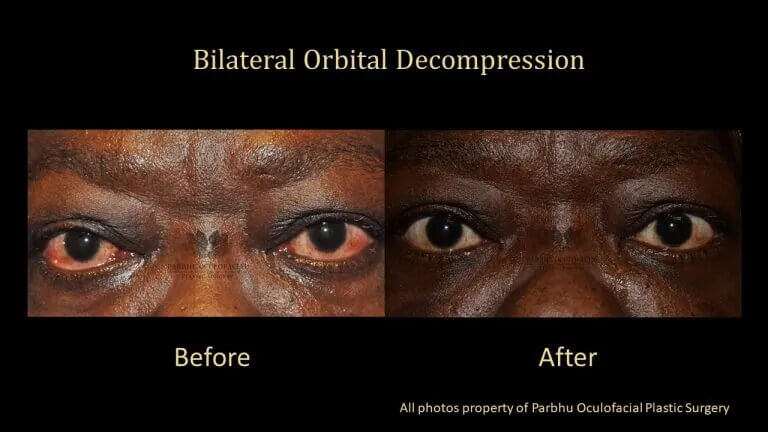



There are several conditions and issues that may be treated with orbital surgery, including:
Orbital surgeries are highly delicate procedures. The goals of orbital surgery may vary depending on the condition that is being treated, but are generally: to remove tumors or restructure the orbital area, to preserve vision and the eyes, and to restore the patient to good health. There are several different types of orbital surgeries that may be performed.
Graves’ disease sometimes causes a condition called exophthalmos, in which the eyes bulge. If not treated, exophthalmos can cause eye pain, headaches, keratosis, and loss of vision. Orbital decompression creates more space in the orbit, which allows the eye to return to a normal position.
Orbital decompression is performed under general anesthesia. During orbital decompression procedures, bone can be removed from the orbital floor, medial wall or lateral wall. This is sometimes done in combination with an ENT surgeon who approaches the medial wall and floor endoscopically to further decompress the posterior extent of the decompression.
Orbital volume augmentation treats orbital volume deficiency that may cause the eyes to appear sunken in. Orbital volume augmentation may be performed using a minimally invasive approach by injecting certain substances into the orbital area through a transcutaneous or transconjunctival route using a needle, cannula, or trocar. Orbital volume augmentation can be performed on patients that are blind or sighted in order to preserve health and restore appearance. Orbital volume augmentation can also be performed using implants through a transconjunctival (inside of the eyelid) surgical approach.
Enucleation is the removal of the entire eye; evisceration is the removal of the contents of the eye. Enucleation or evisceration may be necessary to remove tumors, alleviate a severe eye infection, to relieve pain in a blind eye, or to treat an eye that has been damaged by trauma. After enucleation or evisceration has been performed, a patient can be fitted with a prosthesis by an ocularist who can match it to the patient’s other eye.